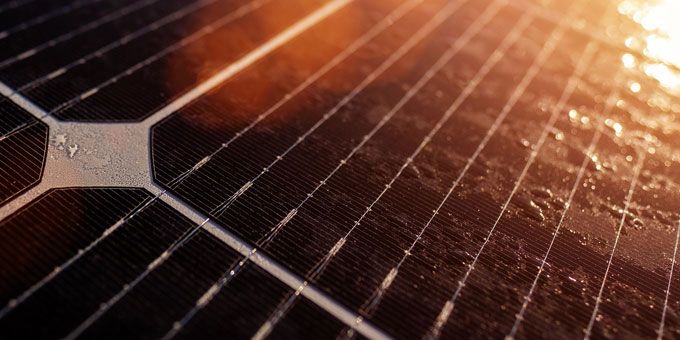Solar PV systems spend all their time outside, so it's natural for them to encounter the occasional animal droppings or falling acorns. You may wonder how to keep them intact when more prominent issues like thunderstorms and hurricanes roll around, though.
 How to Protect Solar Panels from Environmental Damage
How to Protect Solar Panels from Environmental Damage

Emily Folk | Conservation Folks
Solar panels are durable and energy-saving, and they offer clean alternatives to coal power. Residents and businesses alike use them to knock down energy bills and reduce fossil fuel usage — a win for your pockets and the environment. As with any new equipment, they require regular maintenance to keep them working at full efficiency. However, environmental damage proposes a unique situation.
Solar PV systems spend all their time outside, so it's natural for them to encounter the occasional animal droppings or falling acorns. You may wonder how to keep them intact when more prominent issues like thunderstorms and hurricanes roll around, though. Their natural durability provides them adequate protection to withstand most weather events, but you can take a few steps to prevent unnecessary damage.
Vegetation Pruning
Even if none of your trees ever fall onto your solar PV, they could still leave scratches on the surface from falling twigs and debris. These imperfections reduce the panel's ability to absorb sunlight, because the rays can't adequately reach solar cells. This may not have a noticeable impact, but larger limbs can undoubtedly do more damage. An accumulation of dents and scratches can render your equipment unusable, forcing you to replace or repair it.
Call a professional to trim the trees surrounding your solar panels. Consider cutting them down if they'll prove too much of a hassle to keep trimming back every season. Keep any greenery growing near the PV system — whether in an industrial operation or residential home — cut short and away from its surfaces.
Editors Recommendation "Choosing the Right Solution Solar on Flat Roofs - Ballasted, Attached & Hybrid"
Retaining Walls
Retaining walls protect solar panels installed on the ground by reducing erosion. Frequent rains can wash away dirt and sand, chipping the foundation of solar panels. If too much of the earth erodes, they're liable to lose their foundation, causing them to collapse and sustain significant damage.
Retaining walls made of precast concrete provide an impenetrable barrier against wind, rain and other erosive forces. They're especially beneficial for nonresidential use, such as solar farms or business facilities. One shining characteristic of retaining walls is they can last for decades without replacement or major repairs. Install them once, and they give a lifetime of service in keeping your solar PV safe.
Panel Sealing
Solar panels have seals on them, much like windows and doors do. These can wear out over time, which allows water to get inside the PV mechanism and cause short-circuiting. You may not realize this if you don't keep track of the panels' sealants — instead, you'll wonder why the cells suddenly stopped working.
Prevent short-outs by regularly inspecting your panels' seals and resealing any that are fading. Silicon-based sealants are best for fixing PV framing, and they're reasonably easy to do yourself. You may also need to upgrade the sealing between the roof and the panel if it shows signs of wear and tear.
Weather Protection Features
Businesses and homeowners can install lightning rods on their properties to protect solar panels from strikes. Installing any PV system on your land requires proper grounding to prevent electrical injury — both for the panels and the owners. Even lightning strikes from feet away can harm your units. Keep in mind a direct hit doesn't need to happen for damage to occur. Indirect hits introduce high voltages into the system, causing components to catch fire.
If you install rods or discharge paths on your property, ensure there are enough to support every panel. Your units will need all the protection they can get, especially considering that most remain directly exposed to the weather.
People who install solar panels use secure anchoring systems to keep them in place. These provide enough stability to prevent movement, even in the windiest storms. You likely already have these if you own solar units, but you may decide to upgrade them or add new components. Ground-mounted panels use earth anchors to provide a steady hold in any weather.
Switching to Solar PV
Solar energy is commendable for its toughness, affordability and power. It's one of the best renewable energy resources on the market — and it becomes particularly valuable when the power goes out and as fossil fuel sources become ineffective. Invest in solar energy, and rest assured you'll have light and electricity to guide you through inclement weather.
If you like this article you may like "Tandem Solar Modules: One-Two Combination Packs a More Powerful Punch"
The content & opinions in this article are the author’s and do not necessarily represent the views of AltEnergyMag
Comments (0)
This post does not have any comments. Be the first to leave a comment below.
Featured Product

